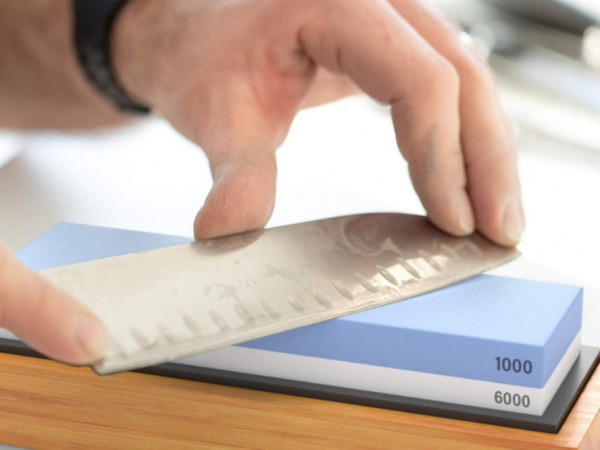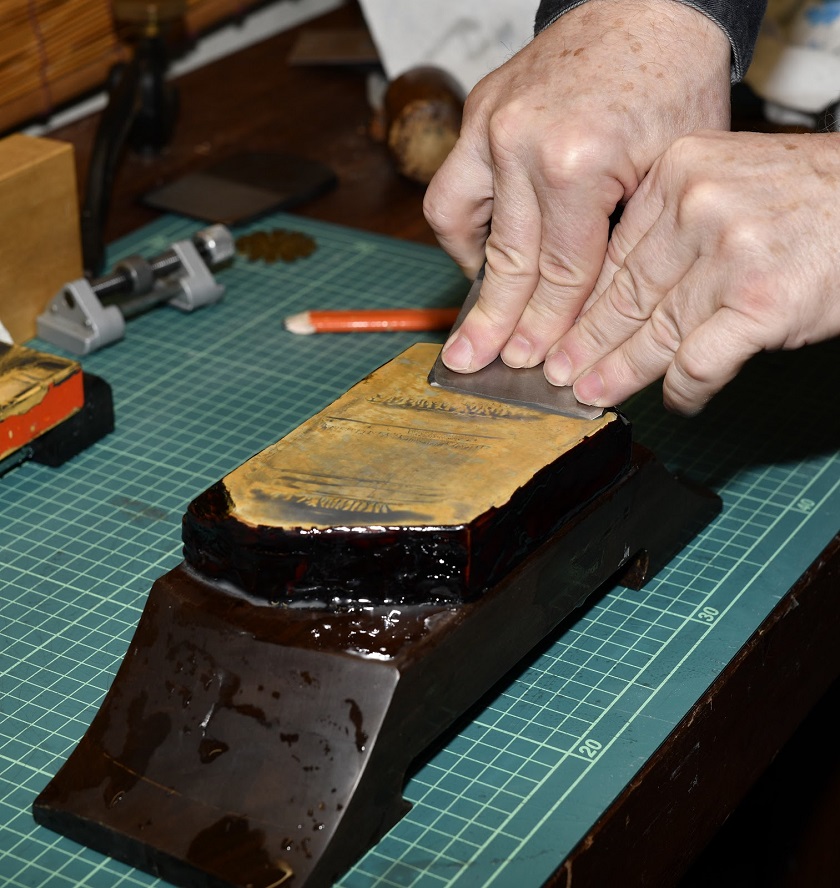25
Nov

Whether you’re a pro at creating mouth-watering culinary masterpieces or not, you’ll need the right ingredients and tools to pull them off. And while the ingredients themselves are essential, you won’t have a successful outcome without a sharp set of kitchen knives. They’re perfect for slicing, cutting and peeling, so having quality ones will help you perform your tasks with ease. Unfortunately, over time, they can become dull and unfit for the job, so sharpening them would be better than investing in a new set.
The easiest, fastest and most proper way to sharpen knives is with the help of sharpening stones for knives. Sharpening stones or also known as whetstones are stones used to sharpen the edges of steel tools, especially knives. This is done by simply grinding the knives against the stone. These stones are key to creating sharp edges on knives which are essential when creating delicious dishes in the kitchen.
These sharpening tools come in different grit sizes whereas the bigger the number, the smaller the grit. Since this can be a bit confusing, the Japanese have broken down stones into three different categories:
There are several types of stones for sharpening knives, and the one you choose is largely a matter of personal choice. There is a large selection of convenient to use and store sharpening stones for knives, giving you the opportunity to experiment with different types. However, you can also opt for a combination of several stones in one. So, before making the final choice, you should carefully consider all of them.

In Australia, these stones are mainly considered coarse stones and can be mainly found in hardware stores and back sheds. They are man-made types of stones with their biggest downside being their ability to cut and sharpen steel slowly. The name oil refers to the fact that you’ll need oil to lubricate the stone before sharpening the knife which over time it can go rancid.
These stones are among the most popular stones for knife sharpening among professional chefs. The main reason for this is their ability to cut fast and their durability. In order to reap its benefits you should invest in a quality diamond stone and you can have peace of mind that it’ll never wear out even if you use it quite often. The best of all is that this stone will do its job impeccably with or without lubricant.
Natural stones are the earliest form of sharpening stones and in the past, they were greatly used in Europe and Japan. With the appearance of man-made knife-sharpening stones, the use of these natural gems has decreased a lot, however, if you’re a fan of the old and ancient stuff, you can still invest in a sharper of this kind. You can use it with or without lubricant, whereas water is the ideal and cheapest lubricant for this sharpening tool.

Ceramic stones were the first successful substitute for natural stones. In order to use them, these ceramic natural tools need to be soaked in lubricant/water for about 10 minutes or more so that their pores and surface become ready for use. An important thing to have in mind is that there are different types of ceramic sharpeners varying in quality, whereas poor-quality sharpeners are softer and can dish out faster. On the other hand, there are some extremely hard ceramic sharpeners making knife sharpening a bit of a task.
Synthetic sharpening stones or also known as synthetic waterstones are a popular choice over the past few years. They are made of white fused aluminium grit, suspended in resin and they are mainly designed for stainless steel knives. Since there are different synthetic sharpeners, some of them may need a brief soaking in water before use while others will just need a splash of water.

There really is no better or worse sharpening tool. The easiest way to opt for the right sharpener is by considering your type of knife and its metal, and according to this, you can make the right choice. If not sure what to pick, seeking professional advice is paramount.
For domestic use, it would be better if you opt for a #400 and #1000 grit stone. Choosing something with this grit will help you repair any minor problems on your knives like chips. Sharpeners of this grit will also polish the edge of most western knives.
Whatever type of knives you have, the general rule is to buy a sharpening stone with a decent-sized deck of about 70mm x 200mm at least. Anything smaller than this will make it harder for you to sharpen and balance the knife.